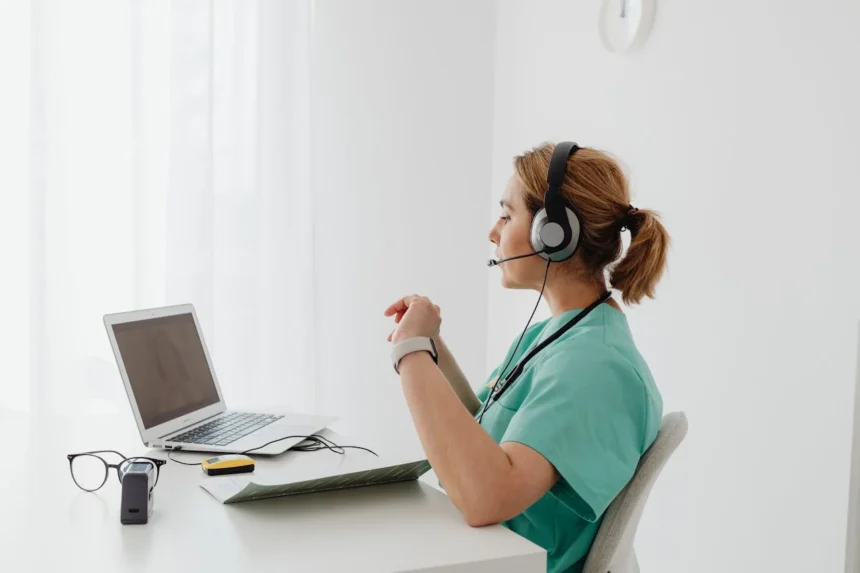For many, the hospital has always been a place you go to get well. But what if the next great hospital isn’t a building at all? What if it’s your own home, powered by a new generation of technology that is making personalized, proactive healthcare a reality?
As a technology journalist, I’ve spent years in Silicon Valley, and the breakthroughs I’m seeing in digital health are among the most profound. From advanced robotics to cutting-edge consumer tech, the healthcare industry is being transformed from a reactive model—treating you only when you get sick—to a proactive, preventative one.
Let’s take a look at the core technologies and the startups leading this charge.
The Core Technologies Making This Possible
The revolution in at-home care is built on three pillars: devices, connectivity, and intelligence.
- Wearables & Sensors: Beyond basic fitness trackers, today’s consumer wearables are becoming clinical-grade tools. Smartwatches and biosensors can monitor everything from your heart rate and oxygen saturation to your ECG, with some devices even tracking glucose levels without a finger prick. For instance, companies like Vitls Inc. are creating a wearable patch that provides continuous, real-time vital sign data directly to healthcare providers.
- Telehealth & Virtual Care: The pandemic forced a global shift, making video consultations and remote care commonplace. This has permanently opened the door for solutions that connect patients with doctors without the need for a physical visit, offering greater access for people in rural areas or with mobility challenges.
- AI & Data Analytics: This is where the magic happens. AI takes the constant stream of data from wearables and turns it into actionable insights. It can analyze patterns, predict a health crisis before it happens, and alert a care team to a potential issue. This allows for timely intervention and personalized care plans tailored to an individual’s unique health patterns.
The Startups and Innovations to Watch
This is an area where startups are truly shaping tomorrow’s world. They are building the infrastructure for a future where a patient’s well-being is continuously monitored, not just checked during a brief office visit.
- Remote Patient Monitoring (RPM): The heart of at-home care. Companies like Athelas and HealthSnap offer integrated platforms that allow healthcare providers to track patients with chronic conditions remotely. Athelas provides a suite of devices that seamlessly send data to a clinician’s dashboard, while HealthSnap specializes in chronic disease management by combining RPM with AI-guided care.
- Smart Home Tech: Even familiar home devices are getting a medical upgrade. Think smart beds that monitor vital signs during sleep or automated medication dispensers that ensure patients never miss a dose.
- AI-Powered Assistants: Beyond the hardware, virtual health assistants and AI chatbots are being used for everything from scheduling appointments to providing automated check-ins and reminders, reducing the administrative burden on providers and keeping patients engaged.
The Benefits for Patients and the Healthcare System
This technological shift isn’t just a convenience; it’s a proven method for improving health outcomes and efficiency.
- Better Patient Outcomes: Studies have shown that RPM can lead to a significant reduction in hospital readmissions. For example, some programs have seen a 76% reduction in readmission rates for high-risk patients. By catching issues early, technology helps prevent a minor concern from becoming a costly, life-threatening emergency.
- Increased Independence and Peace of Mind: For patients, particularly seniors, this technology provides the ability to age in place with confidence. They feel empowered and engaged in their own care, knowing that a professional is monitoring them around the clock.
- Cost-Effectiveness: The economics are compelling. By reducing emergency room visits and unnecessary hospital stays, at-home tech helps lower the overall cost of care. For healthcare providers, it creates a more efficient workflow and allows them to focus their time on patients who require in-person attention.
Conclusion
The future of healthcare is no longer about responding to illness—it’s about predicting and preventing it. By leveraging advanced wearables, smart devices, and the power of AI, we are witnessing a fundamental shift that is democratizing care and bringing the expertise of the clinic directly into our living rooms.
This is a world where technology doesn’t just treat us; it actively keeps us well. And as a journalist, it’s clear to me that this is just the beginning of a profound transformation that will continue to shape our world for decades to come.
FAQs: Your Questions on At-Home Healthcare Technology Answered
1. Is at-home healthcare technology covered by insurance?
Coverage for at-home healthcare technology varies widely depending on your insurance plan, the specific device, and whether it is considered “medically necessary.” Many private insurance plans, as well as Medicare and Medicaid, have expanded their coverage for telehealth and remote patient monitoring services, especially since the pandemic. However, out-of-pocket costs like co-pays or deductibles may still apply. It is always best to check with your insurance provider and your doctor to understand your specific benefits.
2. How is my health data kept safe and private with these devices?
Data privacy and security are a top priority for developers and healthcare providers. In the United States, organizations handling protected health information (PHI) must comply with strict regulations like the Health Insurance Portability and Accountability Act (HIPAA). Secure systems use strong encryption to protect data both when it’s being transmitted and when it’s stored. Many healthcare apps and devices also require multi-factor authentication and limit access to your data on a “need-to-know” basis, ensuring only authorized professionals can view it.
3. What is the next big thing in at-home healthcare technology?
The industry is moving toward more personalized, predictive, and integrated solutions. While today’s tech focuses on monitoring, the next generation will be about proactive intervention. Look for advancements in:
- AI-Powered Predictive Analytics: AI that can not only monitor data but also predict a health event (like a fall or a diabetic episode) and alert a caregiver before it happens.
- Integrated Smart Homes: The seamless integration of healthcare devices into the home’s infrastructure, where everything from a smart thermostat to a bathroom scale works together to provide a holistic view of a person’s health.
- Robotic Assistants: Early-stage robotics that could assist with medication management, mobility, and even companionship for seniors.




